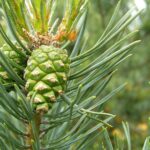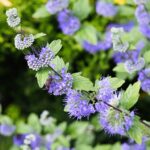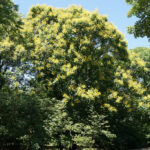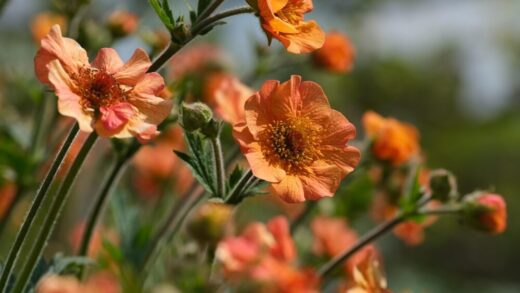Even the most diligently cared-for passion flower can fall prey to a variety of diseases and pests. These issues can compromise the plant’s aesthetic appeal, reduce its flowering, and in severe cases, threaten its very survival. A proactive and observant approach is the cornerstone of effective pest and disease management. This involves not only knowing how to identify and treat common problems but also understanding how to create a growing environment that is less conducive to their development in the first place. Early detection and prompt, appropriate action are crucial for mitigating damage and restoring the plant to full health. This comprehensive overview will equip you with the knowledge needed to protect your passion flower from its most common adversaries.
The first line of defense against both pests and diseases is to maintain a strong and healthy plant. Stressed plants—those that are underwatered, overwatered, poorly nourished, or growing in inadequate light—are far more susceptible to attack. Providing optimal growing conditions is, therefore, a fundamental preventative measure. Good garden hygiene is also paramount. This includes regularly removing dead leaves and debris from around the base of the plant, as this material can harbor fungal spores and provide a hiding place for pests.
Proper spacing and pruning to ensure good air circulation around the vine are also critical preventative strategies. Overcrowded foliage can trap moisture, creating a humid microclimate that is an ideal breeding ground for fungal diseases like powdery mildew and botrytis. Strategic pruning not only improves airflow but also allows for better penetration of sunlight, further discouraging the development of these moisture-loving pathogens. When introducing new plants to your collection, it is always wise to quarantine them for a few weeks to ensure they are not harboring any pests or diseases that could spread to your existing plants.
Regular inspection of your passion flower is essential for early detection. Make it a habit to examine the leaves, both on the upper surface and the underside, as well as the stems and flower buds. Look for any signs of trouble, such as discoloration, spots, webbing, sticky residues, or the physical presence of insects. Catching an infestation or an infection in its initial stages makes it significantly easier to control and manage with less invasive treatment methods.
Common pests
Passion flowers can be a target for several common garden pests, particularly sap-sucking insects that feed on the plant’s fluids, weakening it over time. Aphids are one of the most frequent culprits. These small, pear-shaped insects often congregate in colonies on new growth, tender stems, and the undersides of leaves, sucking the sap and causing distorted growth. They also excrete a sticky substance called honeydew, which can lead to the growth of sooty mold, a black fungus that can interfere with photosynthesis.
Spider mites are another significant pest, especially in hot, dry conditions or on indoor-grown plants where humidity is low. These tiny arachnids are difficult to see with the naked eye, but their presence is often revealed by fine webbing on the plant and a stippled, yellowed appearance of the leaves. They feed by piercing the plant cells and sucking out their contents, which can cause significant damage if left unchecked. A severe infestation can cause leaves to dry up and fall off.
Mealybugs and scale insects are two other sap-sucking pests that can affect passion flowers. Mealybugs appear as small, white, cottony masses, typically found in the leaf axils and other protected areas of the plant. Scale insects have a hard, waxy, shell-like covering and attach themselves firmly to stems and leaves, often appearing as small, brown bumps. Both of these pests drain the plant of its vitality and can be difficult to eradicate due to their protective coverings.
The passion vine butterfly (Heliconius) caterpillar is a specialist pest in certain regions, particularly in the Americas. While the adult butterflies are beautiful pollinators, their larvae feed exclusively on the leaves of Passiflora plants. A large number of these caterpillars can defoliate a vine very quickly. Identifying the distinctive yellow eggs laid on the leaves and young tendrils and removing them by hand can be an effective control measure for small-scale infestations.
Fungal and bacterial diseases
Passion flowers are susceptible to a number of fungal diseases, particularly when conditions are overly wet or humid with poor air circulation. Root rot is one of the most serious and is almost always caused by waterlogged soil. This condition is caused by various soil-borne fungi that attack and decay the plant’s root system, preventing it from absorbing water and nutrients. The symptoms above ground often mimic those of underwatering, including wilting and yellowing leaves, but the soil will be saturated. Preventing root rot through proper watering and ensuring excellent drainage is far easier than trying to cure it.
Powdery mildew is a common fungal disease that appears as a white, powdery coating on the surfaces of leaves, stems, and flowers. While it rarely kills the plant, it is unsightly and can reduce the plant’s vigor by interfering with photosynthesis. It thrives in conditions of high humidity at night and dry days. Improving air circulation through pruning and avoiding overhead watering, which can splash spores onto the foliage, can help to prevent its development.
Leaf spot diseases, caused by various fungi or bacteria, are also prevalent. These typically manifest as dark, circular or irregular spots on the leaves, which may sometimes have a yellow halo around them. In severe cases, the spots can merge, causing the entire leaf to yellow and drop prematurely. As with other fungal diseases, leaf spot is favored by wet conditions. Removing and destroying affected leaves can help to slow the spread of the disease.
Botrytis, also known as gray mold, is another fungal disease that affects passion flowers, particularly in cool, damp weather. It typically attacks flowers, buds, and soft new growth, causing them to turn brown, rot, and become covered in a fuzzy, gray fungal growth. It often enters the plant through wounds or decaying tissue, so good sanitation and careful handling of the plant are important preventative measures.
Integrated pest management strategies
An integrated pest management (IPM) approach is the most sustainable and environmentally responsible way to manage pests and diseases on your passion flower. IPM focuses on prevention and uses a combination of control methods, resorting to chemical pesticides only as a last option. The first step in IPM is always cultural control, which involves creating a healthy growing environment that is less favorable to pests and diseases. This includes proper watering, fertilization, pruning for air circulation, and maintaining good garden hygiene.
Biological control is another key component of IPM. This involves encouraging or introducing natural predators and beneficial insects into your garden that prey on common pests. For example, ladybugs and lacewings are voracious predators of aphids, while predatory mites can help to control spider mite populations. Planting a diverse range of flowering plants can help to attract and sustain these beneficial insects, creating a more balanced and resilient garden ecosystem.
If pests are present, the next step is to use mechanical or physical controls. This can be as simple as spraying the plant with a strong jet of water to dislodge aphids and spider mites, or hand-picking larger pests like caterpillars. For mealybugs and scale, a cotton swab dipped in rubbing alcohol can be used to manually remove and kill the insects. Using sticky traps can also be effective for monitoring and controlling flying pests.
Only when these methods prove insufficient should you consider using chemical controls, starting with the least toxic options first. Insecticidal soaps and horticultural oils are effective against many soft-bodied insects like aphids, mealybugs, and spider mites. These products work by suffocating the pests and have a lower impact on beneficial insects and the environment than broad-spectrum synthetic pesticides. For fungal diseases, fungicides based on copper or sulfur can be effective, but they should be used preventatively or at the first sign of infection.
Treatment and recovery
When a pest or disease issue is identified, swift and appropriate treatment is crucial for the plant’s recovery. For most common pests like aphids and spider mites, an initial treatment with insecticidal soap or horticultural oil is a good first step. It is essential to thoroughly coat all surfaces of the plant, including the undersides of the leaves, as these products must come into direct contact with the pests to be effective. Multiple applications, spaced a week or so apart, may be necessary to control the pest population, as these treatments do not kill the eggs.
For fungal diseases like powdery mildew or leaf spot, the first course of action should be to remove and destroy all affected parts of the plant to prevent the spread of spores. Following this, an application of an appropriate fungicide can be used. Neem oil is a good organic option that has both fungicidal and insecticidal properties. It is important to apply these treatments according to the label instructions and to ensure good coverage of all susceptible plant tissues. Improving air circulation through pruning can also be a key part of the treatment and recovery process.
After treatment, it is vital to help the plant recover its strength. Ensure that it is receiving optimal care in terms of water and light, but avoid over-fertilizing, which can cause stress. A light application of a balanced, liquid fertilizer can help to support the growth of new, healthy foliage. Continue to monitor the plant closely for any signs of the problem re-emerging, and be prepared to repeat treatments if necessary.
In severe cases, such as an advanced root rot infection or a heavily infested plant, more drastic measures may be required. For root rot, this may involve unpotting the plant, cutting away all of the diseased, mushy roots, and repotting it in fresh, sterile, well-draining soil. For a severe pest infestation, it may be necessary to prune away the most heavily affected stems. In some instances, if the plant is too far gone and poses a risk to other plants in your collection, the most prudent decision may be to discard it and start fresh.


















